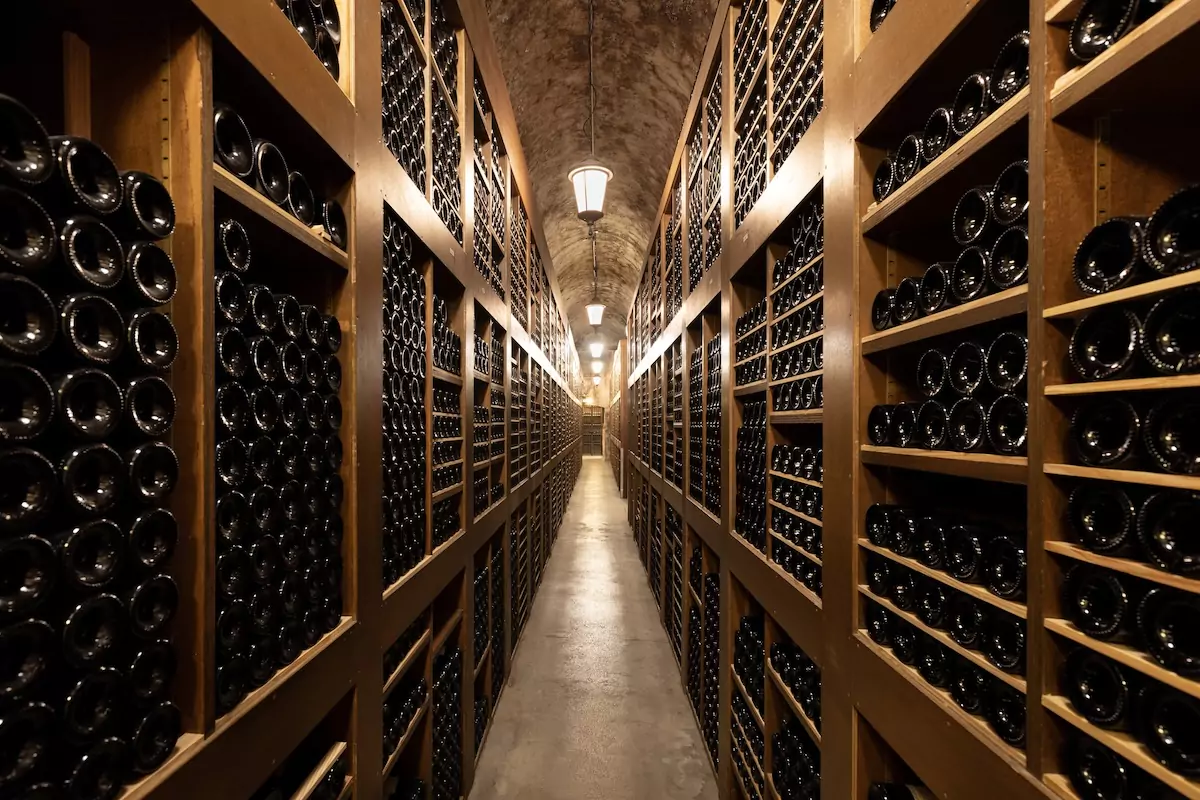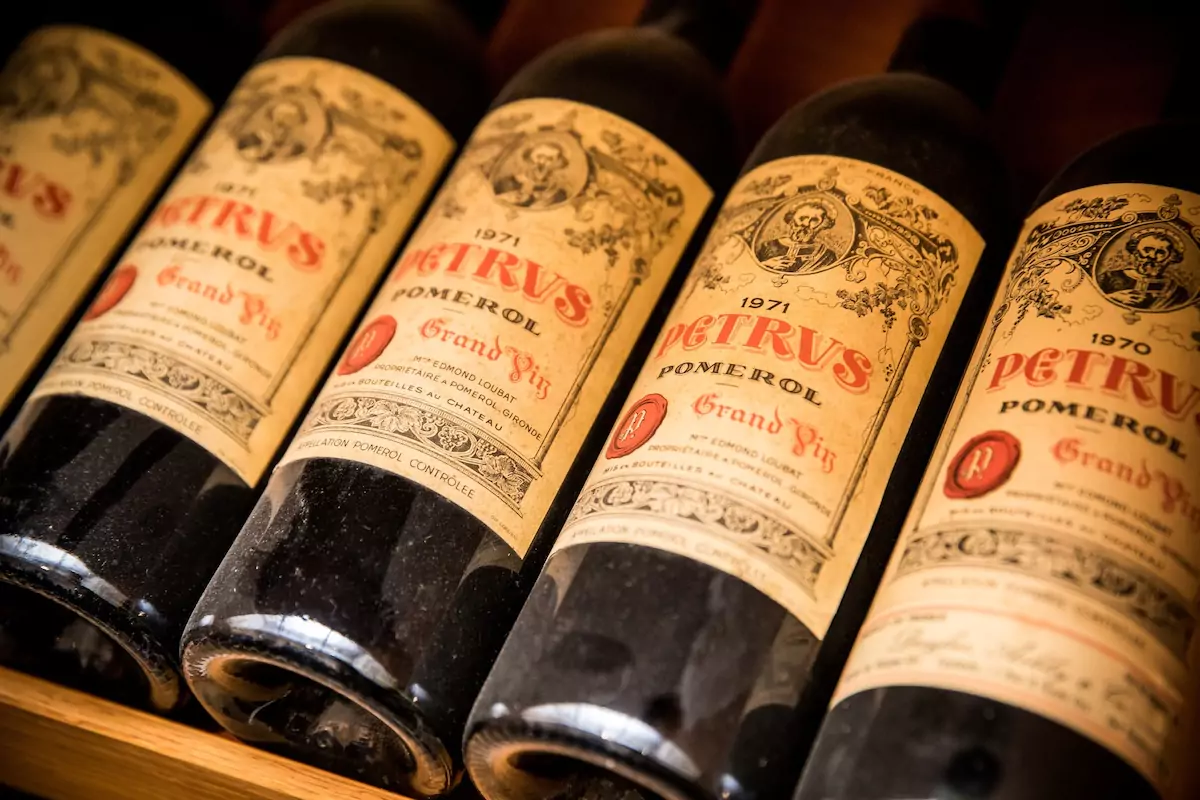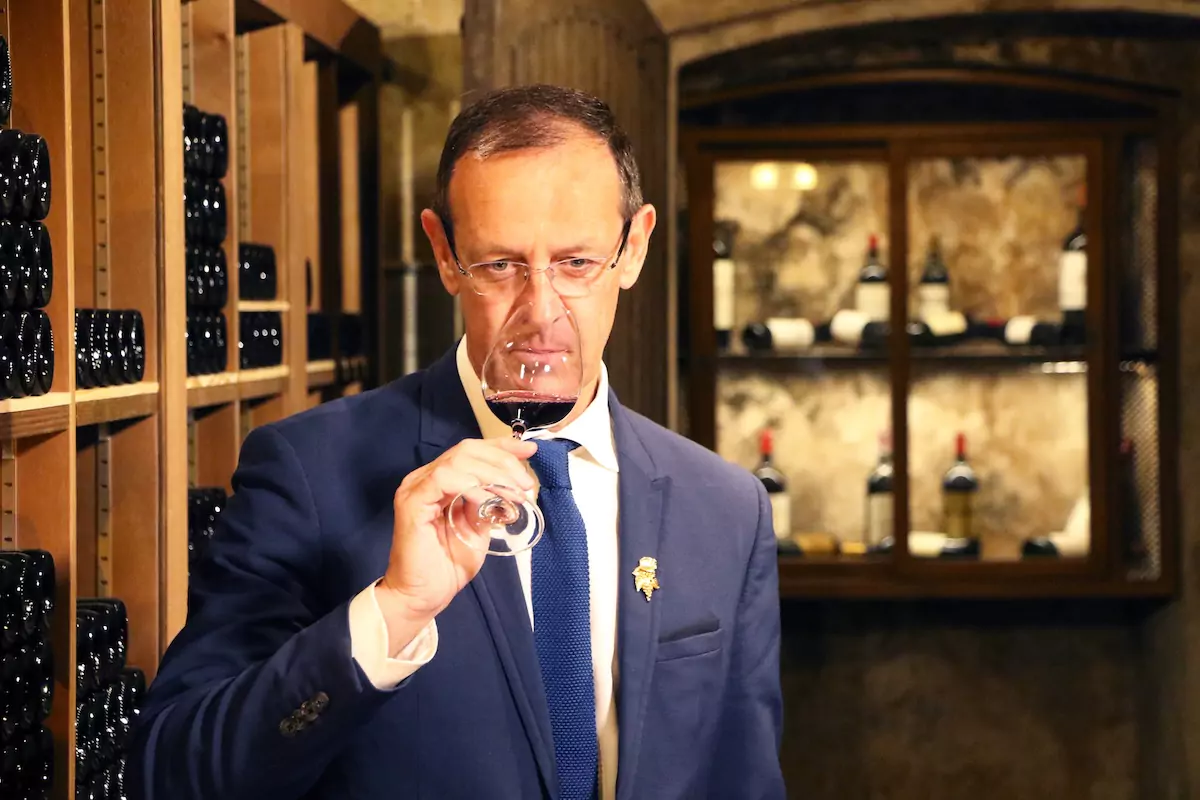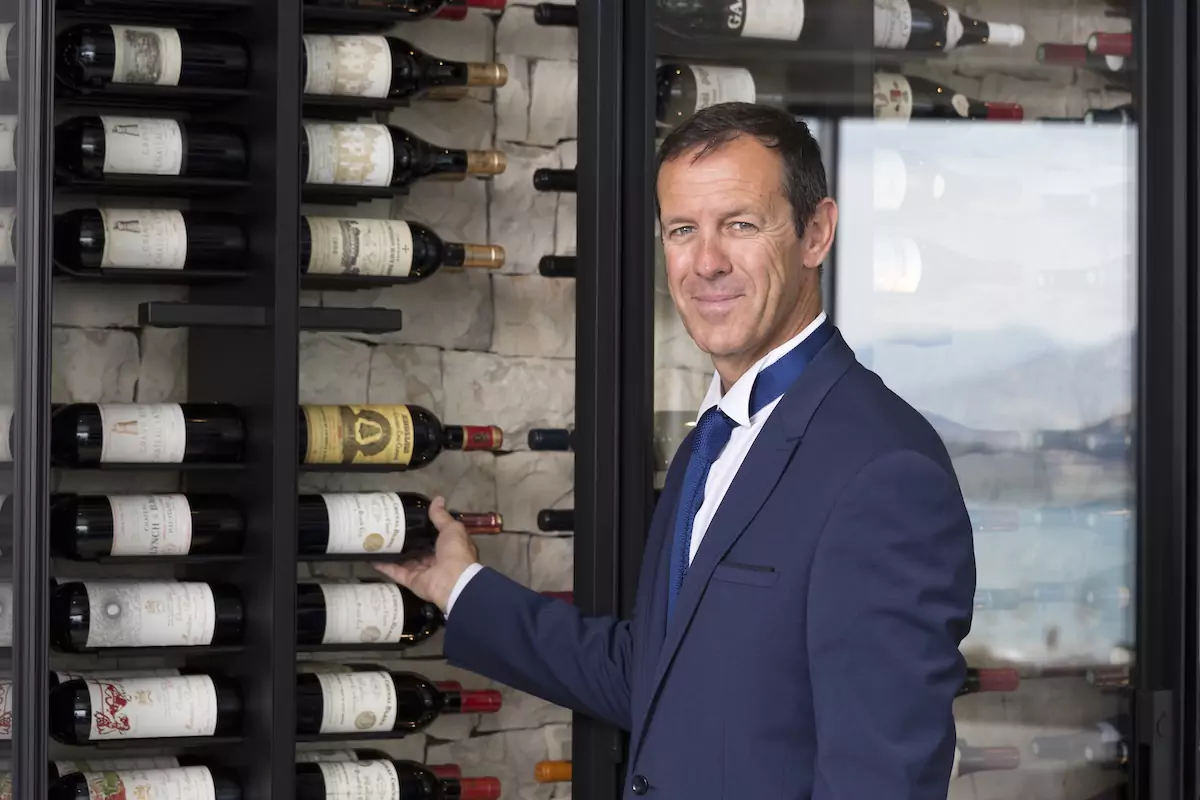As SBM Group Executive Sommelier, Patrice Frank is in charge of the Hôtel de Paris’ famed wine cellars, an incredibly unique cave of treasures that houses no less than 300,000 bottles of wine, and is this year celebrating its 150th anniversary.
The prestigious wine cellars at the Hôtel de Paris were created in 1874 at the initiative of Marie Blanc, wife of Francois Blanc who came to be known as The Magician of Monte-Carlo for his contributions to the establishment of the Société des Bains de Mer (SBM) and the transformation of the Principality into a renowned luxury destination.
To celebrate, Monte-Carlo SBM is organising a series of exclusive dinners and tours in the world’s largest hotel cellar, which has just undergone a spectacular renovation.
In commemorating this special milestone, Monaco Life met with Patrice Frank, SBM’s new Executive Sommelier, who revealed the stories behind these incredible wines, and graciously introduces us to some of the exceptional bottles under his guidance.
Monaco Life: What are your goals as Executive Sommelier of the SBM Group?
Patrice Frank: It has been 10 months since I changed jobs, leaving the Hôtel de Paris Monte-Carlo and the operational side of things, to become SBM Group Head Sommelier. It is encouraging to see that the new general management team is putting the business back at the heart of the wine business.
My mission is based around four main areas: to re-establish links with the vineyards to win new prestigious allocations, which we lack today; to be in charge of wine listing for the group, in conjunction with purchasing and the group’s head sommelier; to run sommelier training modules for the SBM group employees in conjunction with Human Resources; and to coordinate the SBM group’s wine lists with my colleagues, the group’s head sommeliers.

How did you become a sommelier?
After a baccalaureate in rugby-related studies, I was fortunate to be selected for a few French school teams. I started to study law in Bordeaux while continuing to play rugby in Angoulême and in Cognac, in the wine growing region of Charente. During my summer vacations, I worked with my former parents-in-law who owned a Michelin-starred restaurant in Cognac, and I immediately liked the contact with the clients and the whole atmosphere. Come September, I didn’t go back to university; I made a career switch and decided to pursue studies to become a sommelier.
After various experiences in Michelin-starred establishments in France and abroad, I arrived at the mythical Hôtel de Paris in Monte-Carlo in May 2000, just three days before the Formula One Grand Prix, and was immediately immersed into a totally different dimension of sommelier and gastronomy. The rest is history.
What factors influence the selection of wines for a menu?
That’s a huge question because there are many parameters that can influence wine pairing.
The ideal is to find the right combination of food and wine: the classic fish and white wine pairing; meat with a full-bodied red, depending of course on the type of meat and sauces.
What philosophy do you pass on to your sommeliers squad?
The most critical is the notion of service and customer satisfaction. We must be able to put our egos and sometimes our knowledge aside to stay connected to the customer’s wishes. When the customer wants something, we can engage in a discussion to better understand their expectations and needs and provide them with the information they require. Sharing and discretion are very important.
The wine list at the cave of the Hôtel de Paris is comprised of many different wines. Some bear a more detailed description than others. Does this influence the customer selection?
We have around 300,000 bottles in our cellar for more than 6,000 different references. As far as wines and champagnes are concerned, we try to make all our purchases at the end of the vintage or en primeur for the Bordeaux market.
Afterwards, we mature the wines in our cellars 12 meters underground and offer them to our customers when they are fully matured. We try to keep the Bordeaux wines for at least seven to nine years, and more for the grand’s crus. As far as Burgundy is concerned, there is a little more pressure from the market, but for the moment we manage to keep our wines between four and six years. We are working in depth for Burgundy to keep our great vintages as long as possible.
We are also working on ageing for champagne, as the great champagne vintages age perfectly over time, some of them for more than 15 years.
Could you tell us about some of the trophy wines to be found in the caves of the Hôtel de Paris?
The cellars of the Hôtel de Paris Monte-Carlo make a lasting impression on all visitors. Built into the rock, they are divided into several cellars with centuries-old vaults. Their precious contents are kept safe from noise and odours, 12 meters underground, as I said before.

Let me name a few: Château Margaux 1929, Château d’Yquem 1890, Petrus 1945, Krug 1929, Mouton Rothschild 1945, Double Mg Mission Haut-Brion 1920, Cognac 1809 and 1811 Sazerac de Forge. The Heritage Reserve is home to some prestigious references.
We do our utmost to maintain a library of the world’s greatest wines.
What is the oldest wine you have tasted until now and what was it like?
The oldest wine I’ve ever tasted is a Musigny Grand Cru (Burgundy red wine) 1923. Defining it is really complicated, as there are two facets to tasting such a wine. The technical aspect, where we have a wine with a very light amber colour. In 1923, the grapes experienced a wet, cold spring; a dry June and July and an excessively hot, dry August; and a mild rainfall in September, resulting in a small harvest, of high quality. The nose was marked by notes of undergrowth, humus, and stewed fruit. Most impressive was the freshness of the palate, which was still full of crunch. Nor should we overlook the historical aspect, which also plays an important part. We are in the interwar period.
Do you have an ambition to expand the wine offering to include other varieties from different continents into your cellar?
All the world’s greatest wines are present in our cellars. They constitute a very small percentage of our sales, not because we are chauvinistic, but because we receive customers from all over the world in Monaco, and they are much more curious to discover French wines, which explains the strong presence of French and Mediterranean wines in our cellars.
We are working on and developing a range of wines by the glass, which we try to be as broad as possible, so that our clients can discover the great wines of France and the rest of the world.
What is your opinion on the use of screw caps instead of the traditional cork for wine bottle closures?
I have no preconceptions about screw caps — even if the sommelier’s way of doing things is not the same — because screw caps are perfectly suited to a certain range of wines, for example rosé wines, most of which should be drunk within the year, as well as white wines that don’t need to age in the cellar for many years.
I think that today it’s more the European consumers who are nostalgic for cork stoppers rather than screw caps.
How would you define terroir, why is it important, and how does it affect wine quality?
The etymology of the word comes from the Latin territorium meaning territory.
Terroir includes the specific characteristics of soil, topography, climate, landscape, and biodiversity. A terroir is the combination of winegrowers’ know-how, production techniques, soil, topography, climate, biodiversity, and landscape. It is the terroir that characterises a given wine and all its organoleptic qualities.

What do you think about biodynamic wine production?
I am completely in phase with this biodynamic approach, insofar as the dimension of the wine is respected.
Let me explain, today we are obliged to consider the management of the terroir and the soil by using far fewer additives. On the other hand, when working in the cellar, the winegrowers are obliged to use certain products that allow them to make wines that are clean and flawless, as far as I’m concerned. In fact, I see a lot of wines appearing nowadays that, to me, have olfactory or gustatory faults, while for some people, have become the norm.
You must find the right balance, which is certainly no easy task, considering the terroir, the climatology, the winemaker, and all the other parameters that make up the world of wine. Fortunately, there are some great biodynamic wines all over the world.
What has been the most significant change in the wine world since you started your career?
Without any hesitation, wine grapes are highly sensitive to climate fluctuations. Wines often have higher and higher alcohol levels and the big job for winegrowers is to keep their wines fresh and fruity.
The harvest season is getting earlier and earlier. Some 25 years ago, the harvest in France took place between the beginning of September and the middle of October. Today, some regions start in mid-August and finish in mid-September.
It may also be due to the style of the wines. Consumers are keeping wines in their cellars for longer, but in my opinion the wines produced today are better drinkable when young.
What is your advice for someone going to their first wine tasting?
Enjoy yourself, don’t over-intellectualise the tasting; that will come later, such as the search for aromas, and tastes. Above all, be aware that there is no such thing as bad judgement during tasting as we all have different palates. There must be a start to building up your library of aromas, savours, and flavours.
RELATED:
Podcast: Fine and rare wines and spirit auctioneer Jamie Ritchie
Join the Monaco Life community – sign up for the Monaco Life newsletter, follow our Podcasts on Spotify, and check us out on Threads, Facebook, Instagram, LinkedIn and Tik Tok.
Main photo: Patrice Frank in the cellars of the Hôtel de Paris showing a Cheval Blanc wine. Source: Monte-Carlo SBM
